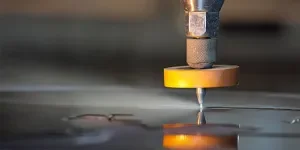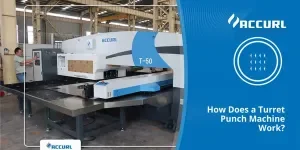In 2025, the rotary fabric cutter market is booming with technological advancements and rising demand for precision tools. This article provides an in-depth analysis of key factors, including cutter types, design, technical specifications, and safety features, to aid professional buyers in making informed decisions. By delving into these aspects, this guide ensures optimal performance and efficiency in fabric cutting operations.
Table of Contents:
– Market Overview of Rotary Fabric Cutters
– In-Depth Analysis of the Rotary Fabric Cutter Market
– Addressing Customer Pain Points and Brand Positioning Strategies
– Key Factors When Selecting a Rotary Fabric Cutter
– Enhancing Efficiency with Advanced Features
– Innovations in Rotary Fabric Cutter Technology
– Ensuring Longevity and Maintenance
– Final Thoughts
Market Overview of Rotary Fabric Cutters
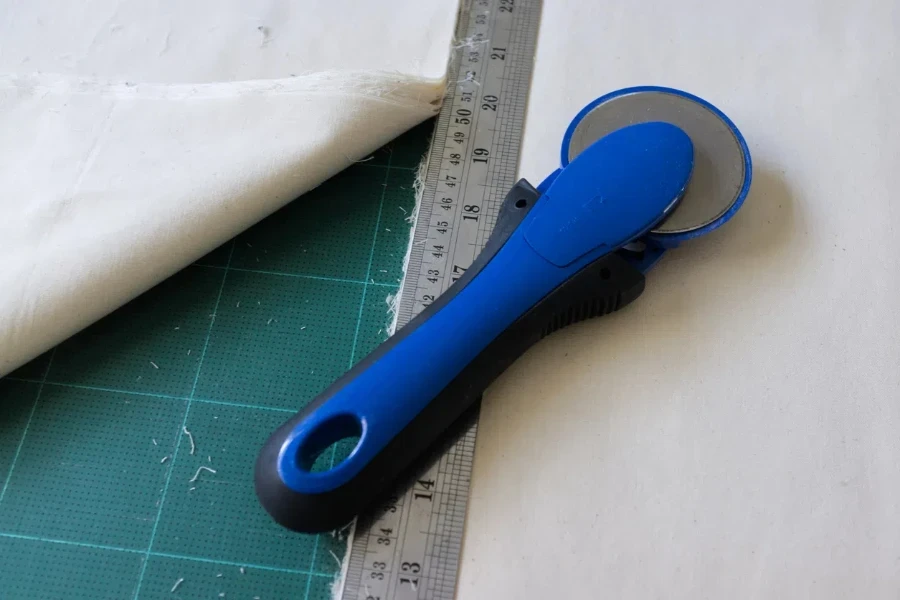
The global market for rotary fabric cutters has seen significant growth, driven by advancements in textile machinery and the rising demand for precision cutting tools. Worth approximately USD 1.2 billion in 2024, the market is projected to reach USD 1.8 billion by 2030, growing at a compound annual growth rate (CAGR) of 7.1%. This growth is primarily due to the increasing adoption of automated and digitalized cutting systems, which enhance efficiency and accuracy in fabric cutting processes.
The Asia-Pacific region leads the rotary fabric cutter market, accounting for over 40% of the global market share. This dominance is due to the region’s strong textile manufacturing base, especially in countries like China, India, and Bangladesh. North America and Europe follow, with significant contributions from the automotive and fashion industries, which demand high-quality fabric cutting solutions. Additionally, there is a growing demand from emerging economies in Latin America and the Middle East, where the textile industry is rapidly expanding.
Technological advancements, such as the integration of computer-aided design (CAD) and computer-aided manufacturing (CAM) systems, have revolutionized the rotary fabric cutter market. These innovations enable precise and complex cutting patterns, reducing material waste and increasing production efficiency. The rising trend of sustainable and eco-friendly practices in the textile industry is also driving demand for energy-efficient and waste-reducing cutting technologies.
In-Depth Analysis of the Rotary Fabric Cutter Market
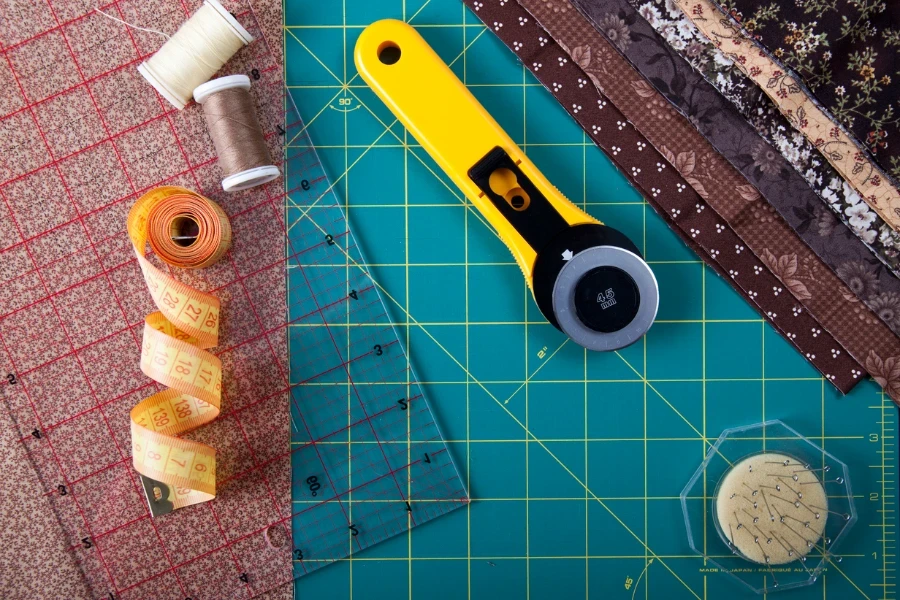
The rotary fabric cutter market is characterized by several key performance benchmarks, including cutting speed, accuracy, durability, and ease of use. High-end models can cut through multiple layers of fabric at speeds exceeding 1,000 cuts per minute, with precision tolerances as low as ±0.1 mm. These performance metrics are crucial for manufacturers aiming to optimize production processes and maintain high-quality standards.
Market share dynamics reveal that established players like Brother Industries, Ltd., and JUKI Corporation hold significant positions due to their extensive product portfolios and strong brand recognition. However, new entrants, particularly from the Asia-Pacific region, are gaining traction by offering cost-effective and innovative solutions. Economic factors, such as fluctuations in raw material prices and labor costs, also impact market dynamics, with manufacturers continually seeking to balance quality and affordability.
Consumer behavior in the rotary fabric cutter market is shifting towards digital and automated solutions. The increasing popularity of DIY fashion and home sewing projects has led to a growing demand for user-friendly and versatile fabric cutters. Furthermore, distribution channel preferences are evolving, with a notable shift towards online sales platforms, which offer a wider range of products and competitive pricing. Recent innovations, such as rotary cutters with built-in laser guides and automated blade sharpening systems, are enhancing the functionality and appeal of these tools.
Addressing Customer Pain Points and Brand Positioning Strategies
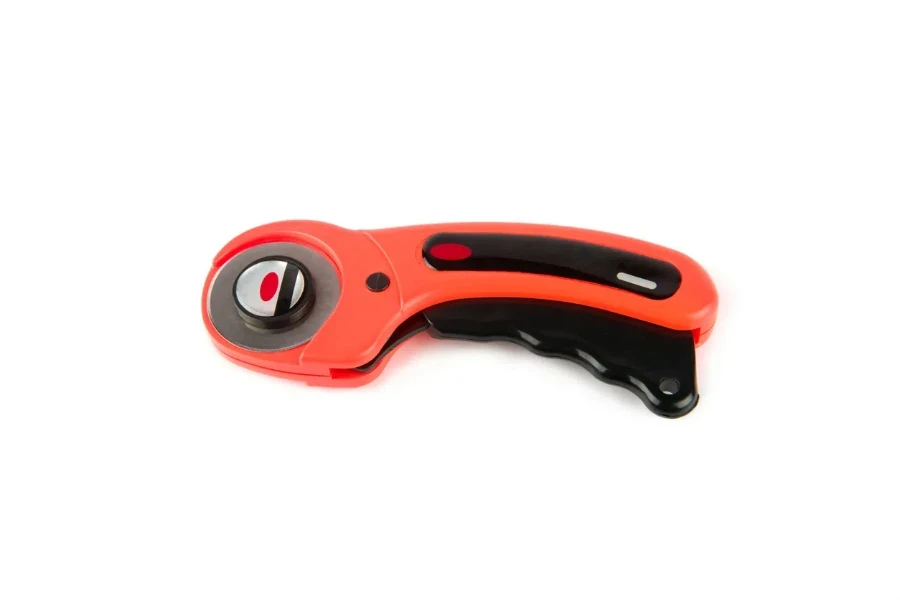
A primary pain point for customers in the rotary fabric cutter market is the need for consistent and precise cutting performance across different fabric types and thicknesses. Manufacturers are addressing this issue by developing advanced blade technologies and adjustable cutting parameters, ensuring optimal performance for various applications. Additionally, the maintenance and replacement of cutting blades are significant concerns, prompting the development of durable and self-maintaining blade systems.
Brand positioning strategies in the rotary fabric cutter market focus on differentiation through innovation and customer-centric solutions. Leading brands emphasize the reliability and precision of their products, often highlighting unique features such as ergonomic designs, enhanced safety mechanisms, and integration with digital design tools. Marketing efforts also target niche markets, such as custom apparel businesses and professional quilting communities, by showcasing specialized products tailored to their specific needs.
Differentiation strategies include offering comprehensive after-sales support and training programs, which help customers maximize the utility of their rotary fabric cutters. Companies are also leveraging digital platforms to provide tutorials, troubleshooting guides, and customer reviews, enhancing the overall user experience. By aligning their product offerings with the evolving demands of the textile industry and consumer preferences, brands can strengthen their market position and drive long-term growth.
Key Factors When Selecting a Rotary Fabric Cutter
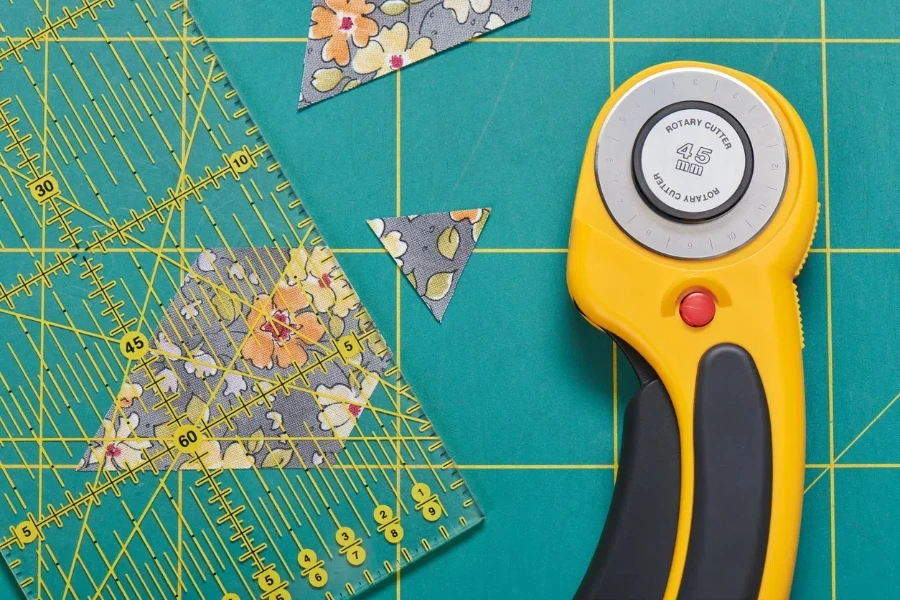
When choosing a rotary fabric cutter, consider several factors to ensure optimal performance and efficiency. These include the type of cutter, design and ergonomics, technical specifications, safety features, and price range. Below, we delve into these aspects in greater detail.
Type of Rotary Fabric Cutter
The type of rotary fabric cutter you select should align with your specific cutting needs. Manual and electric rotary fabric cutters are suited for different applications.
Manual rotary fabric cutters are perfect for small-scale operations or for those who need portability. They rely on the user’s physical effort and are typically more affordable. However, they may not be suitable for cutting large volumes of fabric.
Electric rotary fabric cutters are ideal for high-volume cutting tasks. They come equipped with motors that drive the cutting blade, reducing physical effort and increasing cutting speed. These cutters are more expensive but offer greater efficiency and consistency in cutting.
Design and Ergonomics
The design and ergonomics of a rotary fabric cutter greatly impact its usability and comfort. A well-designed cutter should have a comfortable grip that reduces hand strain during prolonged use. Look for cutters with ergonomic handles that fit naturally in your hand. Some models come with cushioned grips to further enhance comfort. An adjustable handle can also be beneficial, allowing you to find the most comfortable cutting angle.
Additionally, the weight of the cutter plays a role in its usability. A lightweight cutter is easier to maneuver, especially when cutting intricate patterns. However, it should still be sturdy enough to provide stability during cutting.
Technical Specifications
Technical specifications are crucial in determining the cutter’s performance. Important specs to consider include blade size, cutting capacity, and motor power (for electric models).
Blade size typically ranges from 18mm to 60mm. Smaller blades are ideal for intricate cuts and curves, while larger blades are better suited for cutting through multiple layers of fabric or thicker materials.
Cutting capacity refers to the thickness of fabric the cutter can handle in one pass. Higher cutting capacity means the cutter can handle thicker fabrics or multiple layers, making it more versatile.
For electric rotary fabric cutters, motor power is a key specification. A more powerful motor can cut through tougher materials with ease and maintain cutting speed even under heavy use. Look for cutters with motors that offer at least 100 watts of power for optimal performance.
Safety Features
Safety is paramount when working with any cutting tool. Rotary fabric cutters should come equipped with several safety features to protect the user.
A blade guard is essential to prevent accidental cuts when the cutter is not in use. Some models feature retractable blade guards that automatically cover the blade when not in contact with the fabric.
Locking mechanisms are also important to ensure the blade stays in position during cutting. This prevents the blade from shifting, which could lead to uneven cuts or injuries.
For electric cutters, a safety switch can prevent accidental activation. This feature requires the user to engage a safety mechanism before the cutter can be turned on, reducing the risk of unintended operation.
Price Range
The price range of rotary fabric cutters can vary widely based on their features, specifications, and brand. Manual cutters are generally more affordable, with prices ranging from $10 to $50. These are suitable for hobbyists or small-scale operations.
Electric rotary fabric cutters are more expensive, with prices ranging from $100 to over $500. The higher cost is justified by their increased efficiency, cutting power, and additional features such as adjustable speeds and enhanced safety mechanisms.
When considering the price, weigh the cutter’s features and specifications against your specific needs. Investing in a higher-end model may be worthwhile if it offers significant improvements in cutting speed, accuracy, and safety.
Enhancing Efficiency with Advanced Features
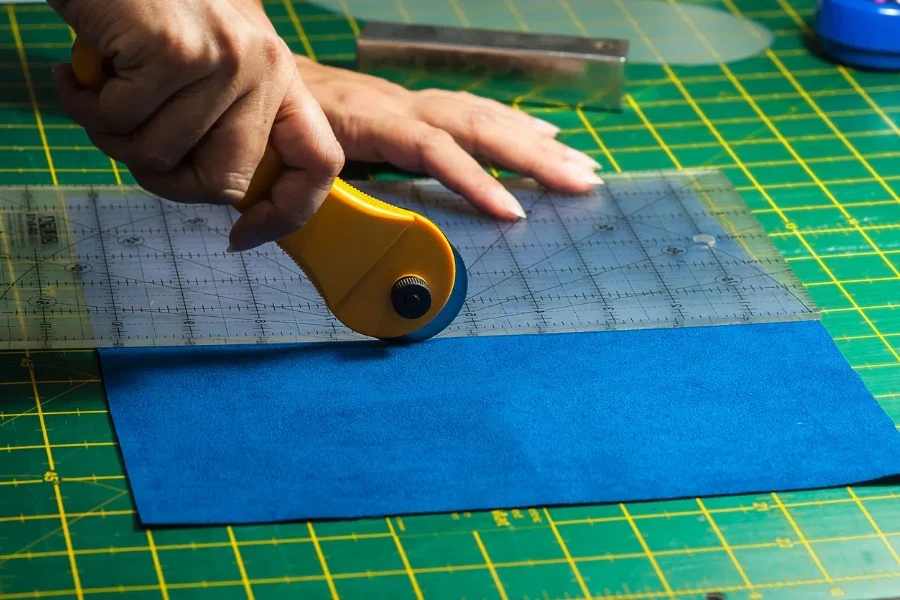
Adjustable Speed Settings
Modern electric rotary fabric cutters often come with adjustable speed settings, allowing users to tailor the cutting speed to the material being cut. This feature enhances precision and reduces the risk of damaging delicate fabrics.
For instance, when cutting through lightweight fabrics like silk or chiffon, a lower speed setting can prevent the material from fraying or tearing. Conversely, higher speeds are suitable for thicker materials like denim or upholstery fabric, ensuring a clean cut through multiple layers.
Adjustable speed settings also contribute to the cutter’s versatility, making it suitable for a wide range of fabric types and cutting tasks. This adaptability can significantly increase productivity in both small-scale and large-scale operations.
Blade Sharpening Mechanisms
Maintaining a sharp blade is crucial for achieving clean, precise cuts. Some rotary fabric cutters come equipped with built-in blade sharpening mechanisms, which automatically sharpen the blade during use.
These mechanisms ensure that the blade remains sharp, reducing the need for frequent blade replacements and minimizing downtime. This feature is particularly beneficial for high-volume cutting operations, where maintaining cutting efficiency is essential.
For manual cutters, detachable blade sharpeners are available, allowing users to periodically sharpen the blade and extend its lifespan. Regular blade maintenance not only improves cutting performance but also enhances safety by reducing the risk of blade slippage.
Interchangeable Blades
Interchangeable blades add to the versatility of rotary fabric cutters. Different blade types, such as straight, wavy, and pinking blades, can be swapped out to achieve various cutting effects.
Straight blades are ideal for clean, straight cuts, while wavy and pinking blades create decorative edges that prevent fraying. This feature is particularly useful for crafters and designers who require a range of cutting styles for different projects.
Additionally, some models offer blades with different sizes, allowing users to choose the most suitable blade for the task at hand. Interchangeable blades enhance the cutter’s functionality and provide greater flexibility in fabric cutting.
Innovations in Rotary Fabric Cutter Technology

Wireless and Battery-Powered Models
Recent advancements in rotary fabric cutter technology include the development of wireless and battery-powered models. These cutters offer the convenience of cordless operation, eliminating the need for power outlets and reducing cord clutter.
Battery-powered cutters are particularly useful for on-site projects or in workspaces with limited access to electrical outlets. Modern batteries provide long-lasting power, enabling extended use without frequent recharging.
Wireless models also enhance maneuverability, allowing users to easily navigate around large pieces of fabric or intricate patterns. This innovation has made rotary fabric cutters more versatile and user-friendly, catering to the needs of both professional and amateur fabric cutters.
Smart Cutting Technology
Smart cutting technology incorporates sensors and automation to improve cutting accuracy and efficiency. Some advanced rotary fabric cutters feature sensors that detect fabric thickness and adjust the cutting speed and pressure accordingly.
This technology ensures consistent cutting results, regardless of the material’s thickness or texture. It also reduces the risk of errors and material wastage, making the cutting process more efficient and cost-effective.
Automated cutting systems, integrated with computer-aided design (CAD) software, allow for precise pattern cutting. Users can input digital patterns, and the cutter automatically follows the design, ensuring accuracy and reducing manual effort.
Ensuring Longevity and Maintenance
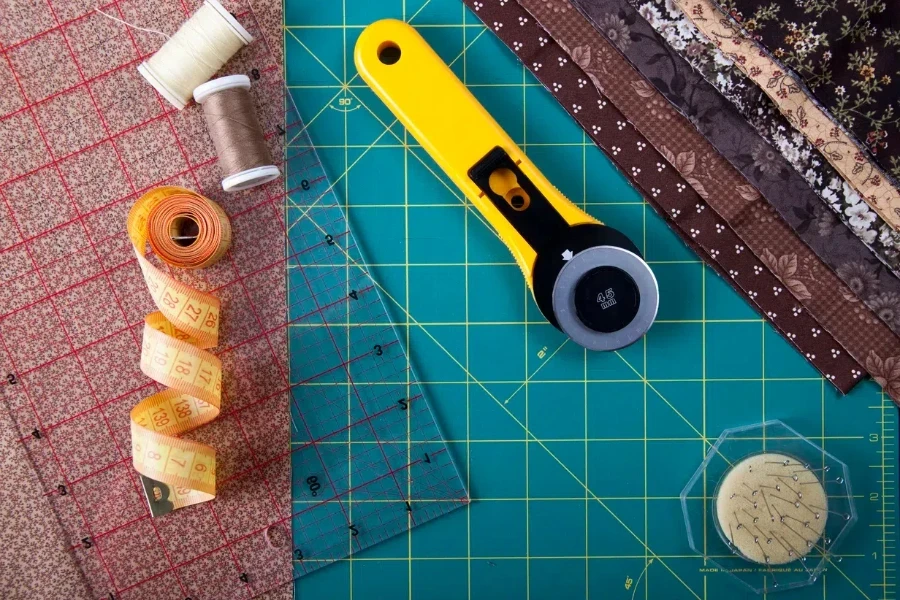
Regular Maintenance Practices
To ensure the longevity and optimal performance of a rotary fabric cutter, regular maintenance is essential. This includes cleaning the blade and housing after each use to prevent fabric fibers and debris from accumulating.
For electric cutters, it’s important to periodically check the motor and electrical components for any signs of wear or damage. Lubricating moving parts can also help maintain smooth operation and prevent rust or corrosion.
Users should follow the manufacturer’s maintenance guidelines and schedule regular inspections to identify any potential issues early. Proper maintenance not only extends the cutter’s lifespan but also ensures consistent cutting performance.
Replacement Parts and Accessories
Having access to replacement parts and accessories is crucial for maintaining a rotary fabric cutter. Common replacement parts include blades, blade guards, and motor components for electric models.
Some manufacturers offer comprehensive maintenance kits that include essential tools and parts for routine upkeep. These kits can be a valuable investment, ensuring that users have everything they need to keep their cutter in top condition.
Additionally, purchasing accessories such as cutting mats and rulers can enhance the cutter’s functionality and protect the work surface. High-quality accessories contribute to better cutting results and prolong the lifespan of the cutter.
Warranty and Customer Support
A reliable warranty and customer support are important considerations when purchasing a rotary fabric cutter. A comprehensive warranty provides peace of mind, covering any defects or issues that may arise during the specified period.
Manufacturers with strong customer support can assist with troubleshooting, maintenance advice, and replacement parts. Access to knowledgeable support staff ensures that any problems are promptly addressed, minimizing downtime and maintaining productivity.
Before purchasing, review the warranty terms and assess the manufacturer’s reputation for customer service. A dependable warranty and support system can significantly enhance the overall ownership experience.
Final Thoughts
Selecting the right rotary fabric cutter involves careful consideration of various factors, including type, design, technical specifications, safety features, and price range. By evaluating these aspects, buyers can choose a cutter that meets their specific needs and enhances their fabric cutting operations. With advancements in technology and a focus on sustainability, modern rotary fabric cutters offer improved performance, efficiency, and environmental responsibility.
